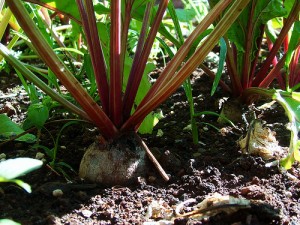Today in San Francisco a judge worried about “the potential elimination of a farmer’s choice to grow non-genetically engineered crops, or a consumer’s choice to eat non-genetically engineered food.”, ruled that the USDA broke the law when it approved herbicide resistant sugar beets for sale.

It’s not clear yet whether the judge will require the seeds a stop to the sale of seeds or what the status of the herbicide resistant beets already planted or in the food supply is. But if he does issue an injunction against the sale of the beets (already growing in farmers fields across the country) he will be the enemy of consumer choice. He will be trading the worry that pollen drift might contaminate some number of non-GM beets (and even that is unlikely*), for the certain removal of the only alternative to non-genetically engineered food. So consumers have the right to pick sugar that sounds more natural** and be absolutely sure than no transgenes (which not even the judge is questioning the safely of) were present in any part of the plant that grew it, but we don’t have the right to pick sugar that reduces topsoil erosion and comes from beets grown with less toxic herbicides.
In fact it sounds like we will soon have the choice between non-transgenic sugar beets or … non-transgenic sugar beets. Judge White, you can’t on one hand hold up consumer choice as a virtue threatened by herbicide resistant sugar beets, and with the other take away our choice by deciding for all of us.
I want to reiterate here that the ruling does not question either the safety or environmental impact of these herbicide resistant sugar beets, but is based solely on his determination that the USDA didn’t do enough to quantify the spread of pollen.
If Judge White’s ruling does turn into a real ban (and it’s not clear that it will, to give the judge credit where it is due) here are a couple of the unintended consequences I predict:
- Beet farmers go back to using more toxic herbicides
- Profitability of growing sugar beets goes down, so less land is planted. The price of sugar goes up.
- With higher sugar prices, corn syrup will become even more attractive to food producers who currently use sugar.
- Kids growing up in pro-organic households will lose a new excuse not to eat swiss chard. “But moooommmmmmmm, I don’t want to eat it, it might be contaiminated with GMO pollen.” (Did you know swiss chard and beets were the same species? You did? … Guess it was just me who missed that fact until now).
I think we can all agree #1 is bad. You can make up your own mind about #2-4.
That’s the end of my post, but here’s a little info on the history of the sugar beet if you’re not familiar with it.
The sugar beet can trace its history back to 1784 when a Prussian (german, although germany didn’t exist as a country yet) chemist names Franz Achard set out to breed a beet rich in sugar. At the time most of the sugar consumed by Europeans came from sugar cane plantations in the Caribbean (sugar cane requires a tropical climate to thrive) and was sent by sailing ship across the Atlantic. In a way Franz Achard was a predecessor to the local foods movement (220 years early). Anyway, he opened his first beet sugar factory in 1801 after fifteen years of breeding, but the sugar beet really got its first chance to shine as a crop a few years later when, during the Napoleonic Wars, an English navy blockade cut the European mainland off from the Caribbean, providing a strong incentive to invest in the production of beet sugar locally. Selective breeding and the spread of cultivation continued to the point were modern sugar beets are 20% sucrose (table sugar) by weight and provide ~40% of the world’s sugar.
Thanks to leftspeaker for tipping me off to this ruling.
You’re welcome! I appreciate that you took the time to write about it. Your post on weeds and herbicide resistance was great too. Though I can’t wait until the next round of traits hits the markets, ’cause if its one of ours we get royalties (woo), but more because every new commercialized trait changes the landscape of agriculture, as well as the politics that surrounds it.
Bt and RR have worked great in the field, but technically it was somewhat low-hanging fruit and the benefits are not outwardly clear to consumers. When the intrinsic yield, drought tolerance and nitrogen use efficiency (now there is a trait hanging high up in that tree!) seeds come out, it will be interesting to see how attitudes shift. Hopefully I can stay on the ground floor and be part of it until then.
Comment by Amy — September 25, 2009 @ 10:15 pm